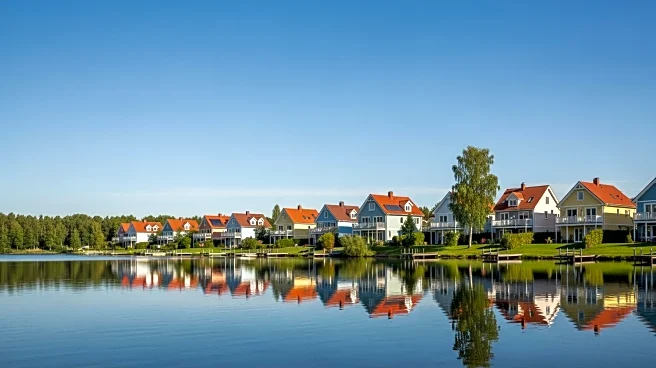What's Happening?
A recent analysis of cross-market demand data from Realtor.com reveals that homebuyers from various major U.S. metropolitan areas are increasingly looking to purchase homes in Spartanburg, South Carolina.
The data, which covers the third quarter of 2025, indicates that Atlanta, Georgia, leads the list with a view share of 16.2%, followed by Greenville, South Carolina, at 12.8%, and New York, New York, at 9.4%. Other notable metros include Charlotte, North Carolina, and Washington, D.C. The trend is occurring in the context of a nationwide housing market characterized by a scarcity of available homes, which has kept prices elevated despite a slowdown in sales over the past year. According to a 2021 report by the National Association of Realtors, 97% of homebuyers utilized online platforms for house hunting, underscoring the importance of digital tools in navigating the complex real estate landscape.
Why It's Important?
The increased interest in Spartanburg from homebuyers in major metros highlights a significant shift in housing preferences, potentially driven by the ongoing scarcity of homes in traditional urban centers. This trend could have substantial implications for the local economy in Spartanburg, as an influx of new residents may stimulate demand for goods, services, and infrastructure development. Additionally, the movement of homebuyers from larger cities to smaller markets like Spartanburg may reflect broader demographic shifts, including preferences for lower cost of living, less congestion, and more space. Real estate professionals and policymakers in Spartanburg may need to adapt to these changes by addressing housing supply issues and ensuring that the local infrastructure can accommodate growth.
What's Next?
As the trend of homebuyers from major metros considering Spartanburg continues, local real estate markets may experience increased competition and pressure on housing prices. Stakeholders, including local government and real estate developers, may need to explore strategies to expand housing inventory and improve infrastructure to support the growing population. Additionally, the shift may prompt discussions on urban planning and community development to ensure sustainable growth. Monitoring future cross-market demand data will be crucial for understanding how these dynamics evolve and impact Spartanburg's housing market and economy.
Beyond the Headlines
The movement of homebuyers from larger cities to Spartanburg may also have cultural and social implications, as new residents bring diverse backgrounds and experiences to the area. This could lead to changes in community dynamics, local culture, and social services. Furthermore, the trend may reflect broader societal shifts, such as increased remote work opportunities and changing lifestyle preferences post-pandemic. Understanding these deeper implications will be important for fostering community cohesion and ensuring that Spartanburg remains an attractive destination for new residents.











